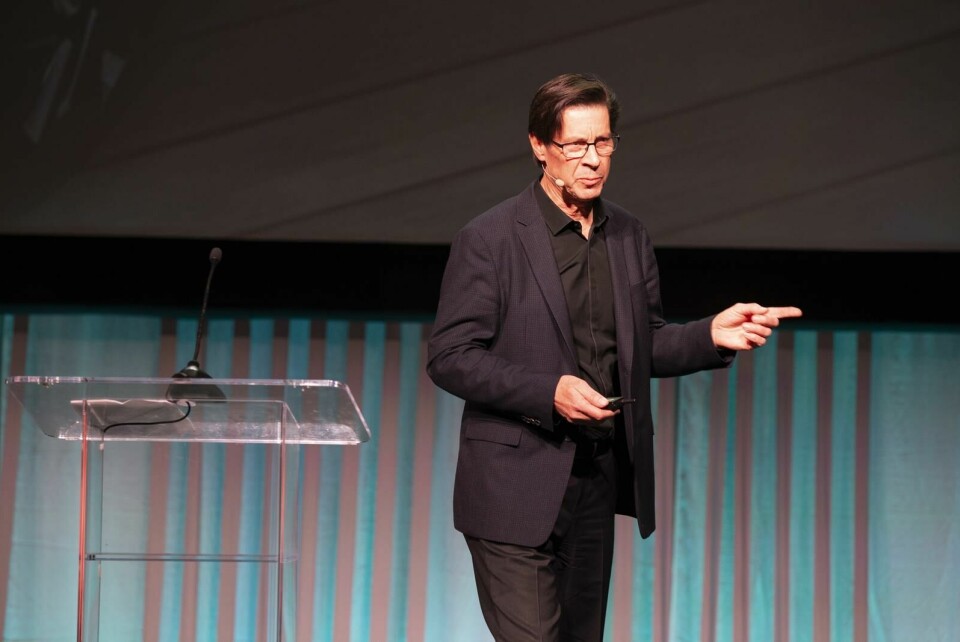
Magna design competition seeks students with insight and vision
[Sponsored] Magna’s Global Bold Perspective Award, staged in association with CDN, is looking for design students with big ideas about future mobility
At our LA Forum late last year, Magna’s Global Director of the Exteriors Design Group, Larry Erickson, announced a significant new student design competition – the Magna Global Bold Perspective Award – staged in collaboration with CDN.
Students based in Europe, North America or China are eligible to submit their work, and a winner will be chosen for each of the three regions, followed by an overall global champion to be announced at the 2019 LA Forum in November. The competition first opened for entries in China, and students based in North America or Europe are now invited to enter via the competition website.
There are some great prizes on offer, so eligible students should waste no time in preparing their entry. The closing date for European and American entries is 30th May 2019.
We spoke to Magna’s Larry Erickson to find out more…
CDN: The Global Bold Perspective Award asks entrants to submit a transportation design for 20 to 30 years in the future. What kind of designs are you hoping to see?
Erickson: Projecting into the future is difficult. Diversity of imagination is one of the best tools to look at the future, and part of the appeal of this contest is the variety of ideas it will inspire. Some people firmly believe that in 30 years transportation vehicles will no longer be confined to roadways. Others believe our relationship with the ground plane using wheels and tyres will evolve and become more efficient. We want to see what tomorrow’s designers believe the solution should be.
Some of the most important attributes of a vehicle are independent of whether a vehicle has two wheels, four wheels or no wheels. They are the connections between the vehicle, the user and their environment. Emerging issues about how the vehicle responds and communicates to the world around it and how it fits into the user’s community represent just the tip of the iceberg. Seeing what is important for tomorrow’s design leaders, especially now at a time of great change, is an opportunity we don’t want to miss.
CDN: The contest guidelines ask entrants to submit exterior views. Does that mean you are not interested in the future of interiors?
Erickson: That’s not the case at all. We firmly believe future solutions should be holistic. And one of the things we’re most curious about is how the next generation will see the connection between interior and exterior. Is it an extension of their personality? Is it a matter of comfort and convenience, making a seamless transition from inside to outside? Is it about safety, not only when you’re in the car but when you’re walking to it? The role of the exterior in creating a whole experience is something that may go in completely new directions with revolutionary new technologies.
?UMBRACO_MACRO macroAlias="RTEImage" image="548304" caption="" lightbox="1" position="left" size="large-image" ?
CDN: What advice would you give to entrants? What makes a great submission?
Erickson: A great entry is made up of both ideas and presentation. Our business is just about as visual as any can be, and it’s easy to fall in love with the image you’re crafting. Sometimes you’ll see a student come up with a simply phenomenal insight into where the world is going but then minimise its impact by focusing too much on a presentation that hides it. One of the most challenging things we ask of our judges is to look through each presentation and assess the concept to see if it has potential, irrespective of how it’s represented.
I would say it’s easier to find great representation skills than to find great thinking – real empathy and deep understanding of what the user is going to experience. One of the reasons we’re staging a global contest is to see different cultural approaches to solving future transportation problems.
CDN: Entrants have the option to submit video animations. Will that kind of material give entries an advantage?
Erickson: Every member of the competition judging team has been in this industry long enough to have seen great changes in the tools used to present ideas. Entrants should convey their design in whatever way they find most comfortable, or that provides the best representation of their ideas. They mustn’t feel they have to create an animation because it might have a bigger wow-factor than static images – that’s not the case at all. All the judges know how to look through the presentation method to assess the value of the design.
?UMBRACO_MACRO macroAlias="RTEImage" image="548302" caption="" lightbox="1" position="left" size="large-image" ?
CDN: Can students submit existing coursework?
Erickson: Absolutely. We’ve tried to set up the competition schedule to fit the academic year in different regions, but entrants can submit a design they did a year ago, or two or three years ago. A lot of the best designs have great shelf life – especially those that cross boundaries and focus on connecting user experience to vehicle attributes.
CDN: What would you say to anyone who feels reluctant to submit their work to be judged?
Erickson: The ability to stand back from what you’ve done and look at it honestly is a key skill for every designer. You have to be able to detach yourself and benefit from an unbiased assessment. The better you are at that, the better your work will become. Your drive to improve and your determination to understand what’s better will be one of the keys to a successful career. So put your work out there. See it an arena with people from different cultures and different value systems. Get out, talk to people and discuss your work: it’s a great way to move forward.



